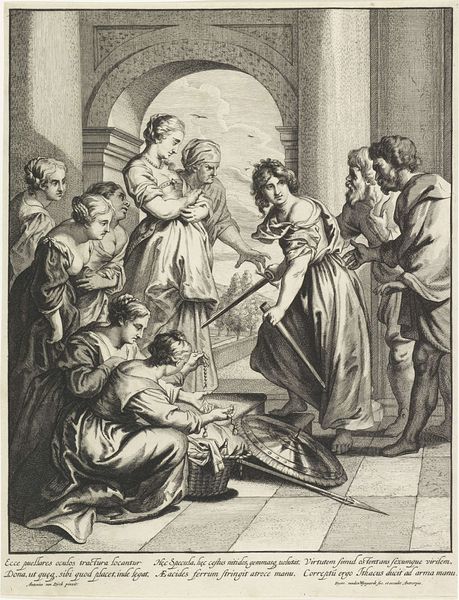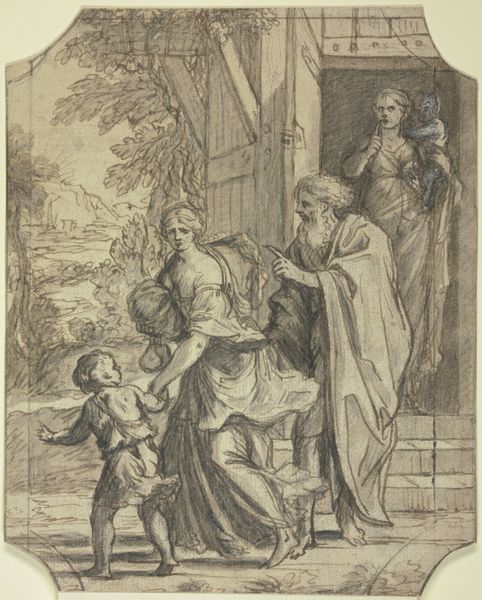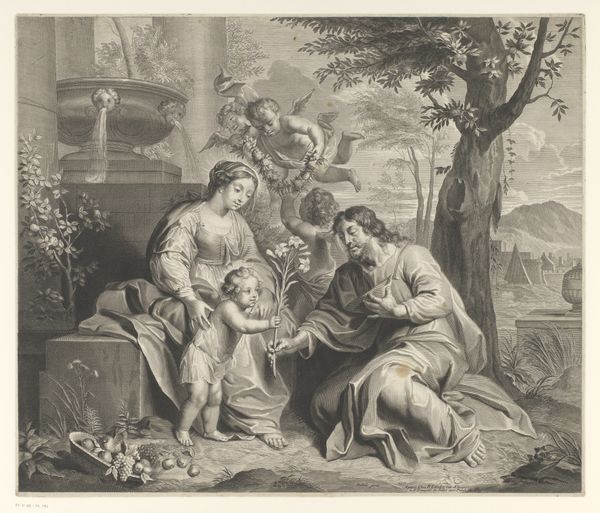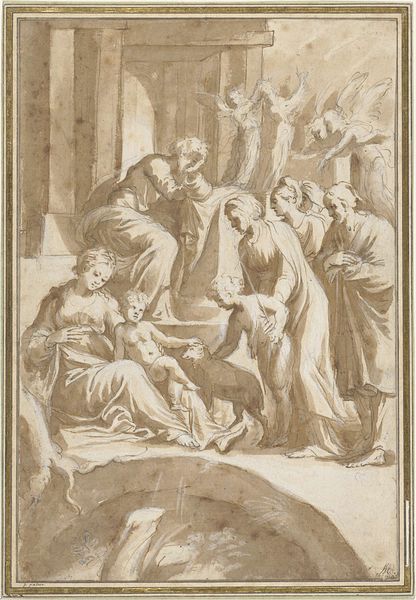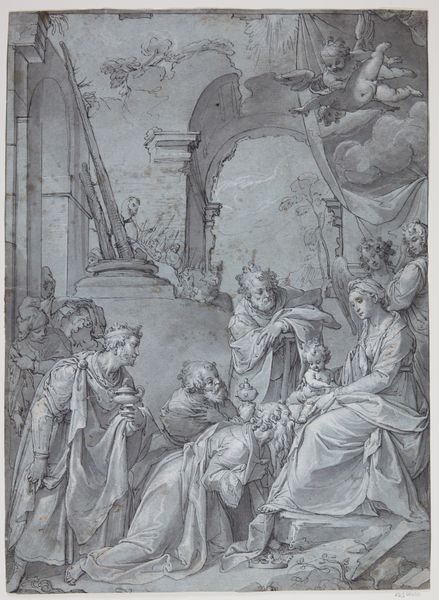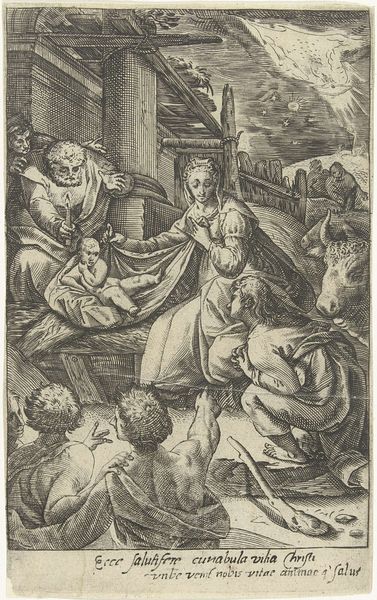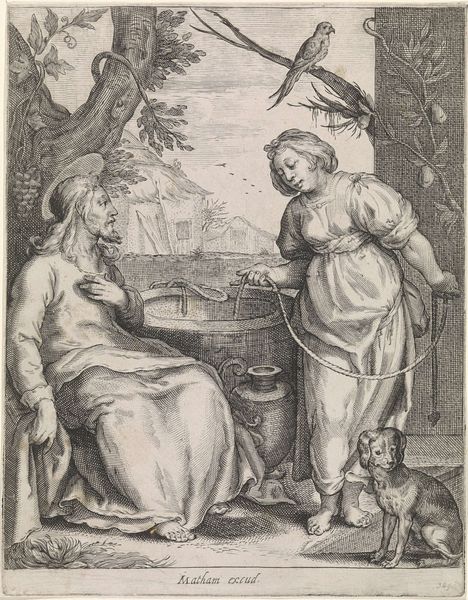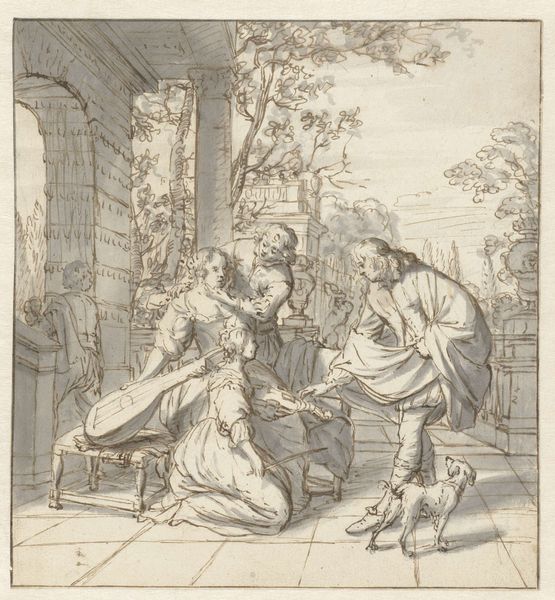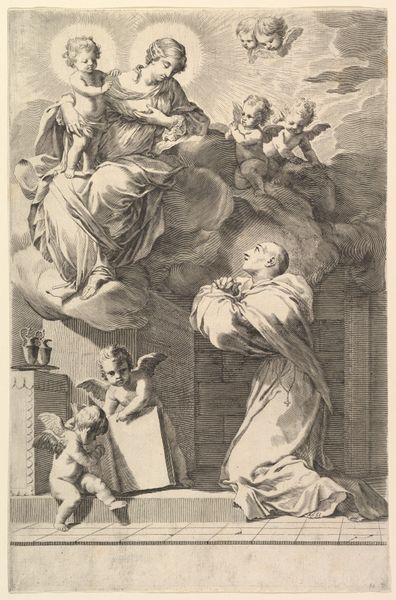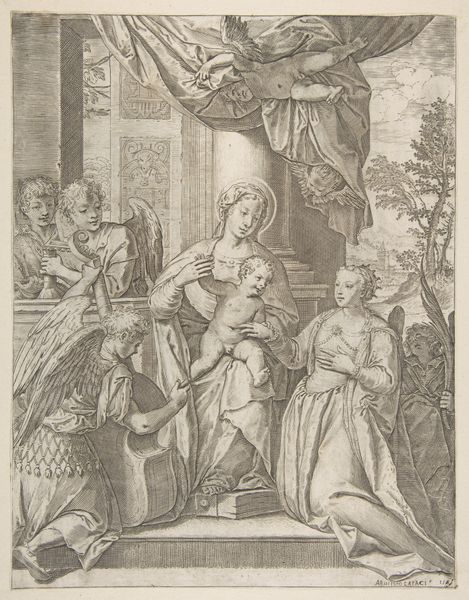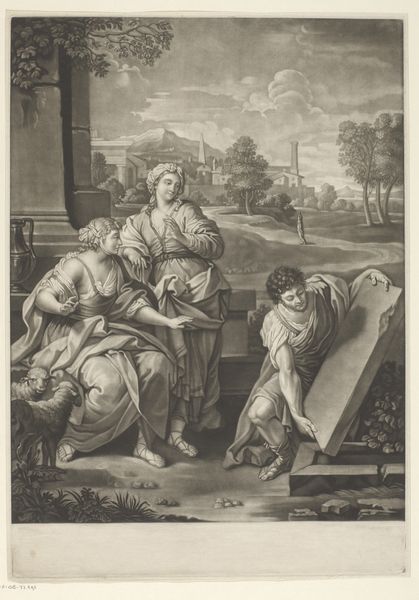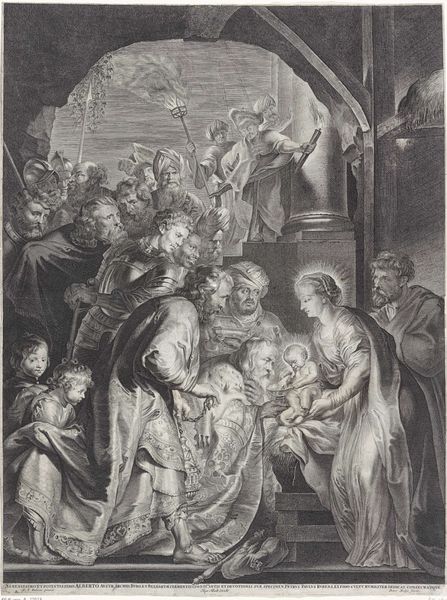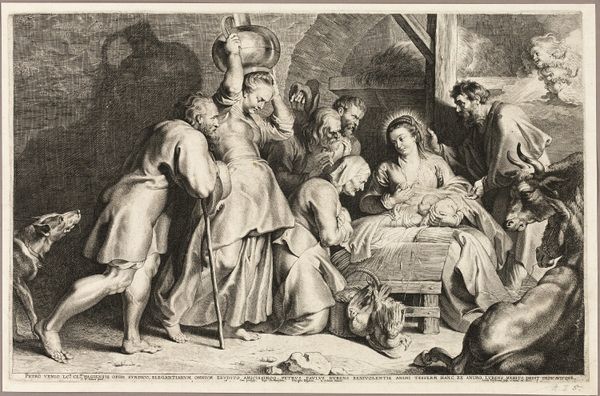
painting, oil-paint
#
portrait
#
narrative-art
#
baroque
#
painting
#
oil-paint
#
figuration
#
oil painting
#
genre-painting
Dimensions: height 79.5 cm, width 66.5 cm, depth 6.5 cm
Copyright: Rijks Museum: Open Domain
Barend Graat made this painting of the Prodigal Son in the Dutch Republic during the Golden Age, but without a specific date for the work, we can't know with certainty where it fits in his development as an artist. The parable of the prodigal son was fertile ground for artists in this period, speaking as it did to Dutch mercantile culture, colonial trade, and the rise and fall of fortunes. It also reflected the religious tensions between the Protestant Reformation and the Catholic Counter-Reformation in the Netherlands. Here, the image is given a moralising theme. The young man is surrounded by courtesans, gamblers, and drinkers, losing his money, his health, and his reputation. We should ask if it is a self-consciously conservative image that defends the established social norms of the time, or is it perhaps a more sympathetic take that critiques the period's economic structures, which saw many people fall from grace through no fault of their own? To answer this, we need to investigate the history of Dutch art, religion, and political economy, and that's where art historians come in.
Comments
No comments
Be the first to comment and join the conversation on the ultimate creative platform.
